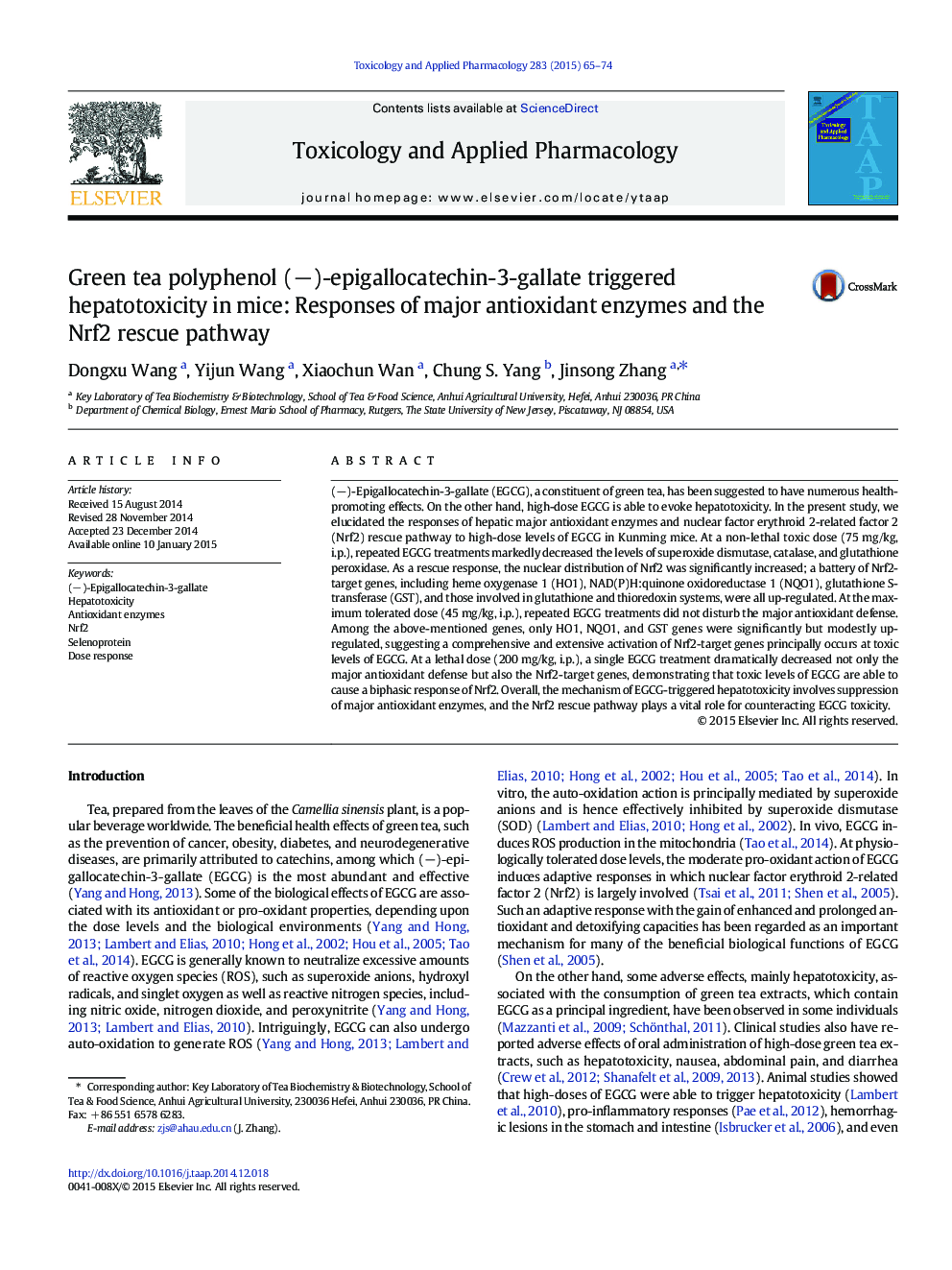| کد مقاله | کد نشریه | سال انتشار | مقاله انگلیسی | نسخه تمام متن |
|---|---|---|---|---|
| 5846170 | 1128456 | 2015 | 10 صفحه PDF | دانلود رایگان |

- EGCG at maximum tolerated dose does not disturb hepatic major antioxidant defense.
- EGCG at maximum tolerated dose modestly upregulates hepatic Nrf2 target genes.
- EGCG at toxic dose suppresses hepatic major antioxidant enzymes.
- EGCG at non-lethal toxic dose pronouncedly activates hepatic Nrf2 rescue response.
- EGCG at lethal dose substantially suppresses hepatic Nrf2 pathway.
(â)-Epigallocatechin-3-gallate (EGCG), a constituent of green tea, has been suggested to have numerous health-promoting effects. On the other hand, high-dose EGCG is able to evoke hepatotoxicity. In the present study, we elucidated the responses of hepatic major antioxidant enzymes and nuclear factor erythroid 2-related factor 2 (Nrf2) rescue pathway to high-dose levels of EGCG in Kunming mice. At a non-lethal toxic dose (75Â mg/kg, i.p.), repeated EGCG treatments markedly decreased the levels of superoxide dismutase, catalase, and glutathione peroxidase. As a rescue response, the nuclear distribution of Nrf2 was significantly increased; a battery of Nrf2-target genes, including heme oxygenase 1 (HO1), NAD(P)H:quinone oxidoreductase 1 (NQO1), glutathione S-transferase (GST), and those involved in glutathione and thioredoxin systems, were all up-regulated. At the maximum tolerated dose (45Â mg/kg, i.p.), repeated EGCG treatments did not disturb the major antioxidant defense. Among the above-mentioned genes, only HO1, NQO1, and GST genes were significantly but modestly up-regulated, suggesting a comprehensive and extensive activation of Nrf2-target genes principally occurs at toxic levels of EGCG. At a lethal dose (200Â mg/kg, i.p.), a single EGCG treatment dramatically decreased not only the major antioxidant defense but also the Nrf2-target genes, demonstrating that toxic levels of EGCG are able to cause a biphasic response of Nrf2. Overall, the mechanism of EGCG-triggered hepatotoxicity involves suppression of major antioxidant enzymes, and the Nrf2 rescue pathway plays a vital role for counteracting EGCG toxicity.
Journal: Toxicology and Applied Pharmacology - Volume 283, Issue 1, 15 February 2015, Pages 65-74